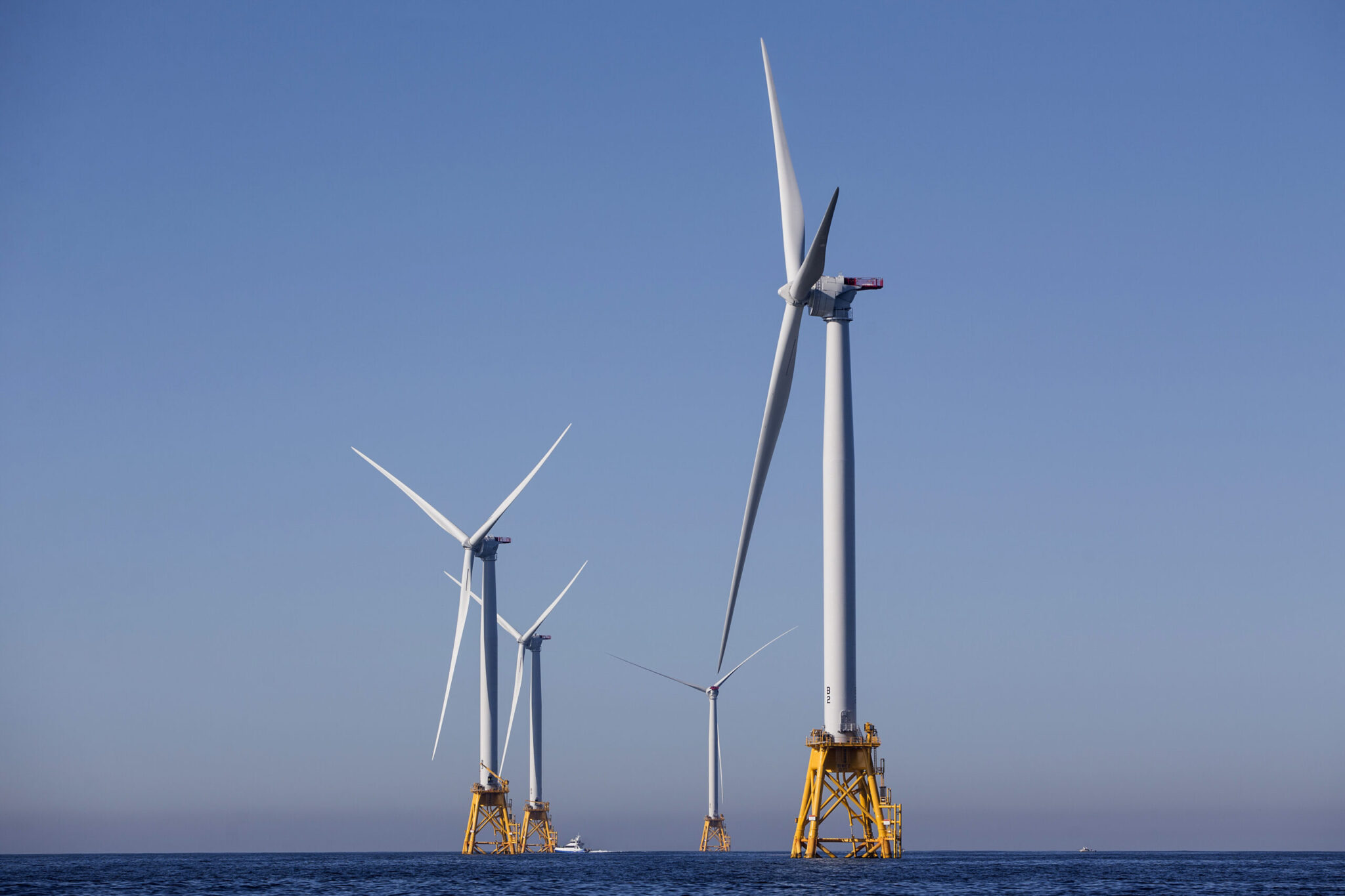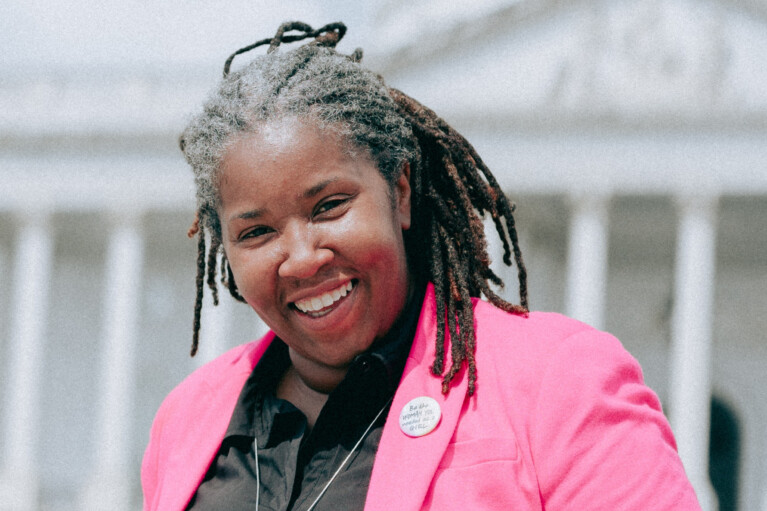Md. offshore wind developer announces ‘repositioning’ of project, seeks new financial support

Maryland’s nascent offshore wind energy industry suffered a major blow late Thursday when one of the two companies planning to install wind turbines off the coast of Ocean City announced that it was “repositioning” its plans, pulling out of its agreement with the state and seeking alternative financial arrangements to keep the project going.
Ørsted, the world’s largest developer of offshore wind, emphasized that it was still committed to building its project in federal waters, but said it was opting out of the agreement it had reached with the Maryland Public Service Commission for financial clean energy credits intended to help fund the development. The company said that while it would still seek permits for the proposed wind farm from the federal government, and would continue to develop construction and operations plans for Maryland, the current financial realties of the offshore wind industry made it impossible to continue under the present arrangement.
A statement Ørsted issued late Thursday said the projected revenue from the state’s clean energy credits, which cap what the company can charge ratepayers for its wind power, is “no longer commercially viable because of today’s challenging market conditions, including inflation, high interest rates and supply chain constraints.”
Through two separate but adjacent leases known as Skipjack 1 and Skipjack 2 that had won state approval, Ørsted is ticketed to provide 966 megawatts of wind energy beginning later this decade. A company executive said Ørsted was determined to work with state officials, potential investors and other stakeholders in an effort to find a better way to finance and save the project.
“Today’s announcement affirms our commitment to developing value creating projects and represents an opportunity to reposition Skipjack Wind, located in a strategically valuable federal lease area and with a state that is highly supportive of offshore wind, for future offtake opportunities,” said David Hardy, group executive vice president and CEO Americas at Ørsted. “As we explore the best path forward for Skipjack Wind, we anticipate several opportunities and will evaluate each as it becomes available. We will continue to advance Skipjack Wind’s development milestones, including its Construction and Operations Plan.”
By saying the Danish company was exploring “future offtake opportunities,” Hardy was signaling that Ørsted will be looking for new funding streams, new investors, new government programs that could potentially generate additional capital, a new rate scheme for electricity consumers — or some combination.
In a statement, Carter Elliott IV, a spokesperson for Gov. Wes Moore (D), who has vowed to make Maryland a leader in developing offshore wind, said the governor was “disappointed” by the news, because the project “has the capacity to impact the lives of so many Marylanders.”
“However, he will continue to work with legislators, Maryland’s federal partners, offshore wind developers and advocates that see Maryland’s potential in order to build a system to help Maryland reach the state’s goal of 100% clean energy by 2035,” Elliott said. “If this is going to be Maryland’s decade, we must continue to push forward to reach the state’s ambitious climate goals, and the governor is as committed as ever to doing just that.”
Ørsted’s announcement isn’t altogether surprising. The company in the fall abandoned plans to build two offshore wind developments off the coast of New Jersey, and at the time hinted that it was reevaluating its Maryland commitments. It also sought to revise contracts last year for a proposed offshore wind project off the coast of Long Island, a petition the New York Public Service Commission rejected as being too costly for ratepayers. Throughout its activities over the past year, the company has cited “macroeconomic challenges” facing the entire industry.
But it isn’t quite clear where the discussions in Maryland will go from here.
The Public Service Commission, which awarded the Maryland leases to Ørsted and a second company, US Wind, and regulates electric utilities, will play a role in what happens next.
“Today’s news from Ørsted is disappointing — the Skipjack project was an important component in advancing Maryland’s clean energy goals,” PSC Chair Fred Hoover said in a statement. “However, the Commission remains optimistic about the future of the offshore wind industry in Maryland, and would note that the US Wind project continues to move through the federal approval process.”
Just last year, the General Assembly passed legislation to increase the state’s offshore wind energy goals. One provision in that law allows the Public Service Commission to lift the cap on wind developers’ ability to receive federal incentives. It also empowers the PSC to conduct an analysis of offshore wind transmission system expansion options, and directs the Maryland Department of General Services to invite bids for a transmission project — which could ease the offshore wind operators’ financial burden.
“What this means is there are other options for building offshore wind in Maryland,” Del. Lorig Charkoudian (D-Montgomery), the chief House sponsor of last year’s offshore wind expansion legislation, said in an interview Thursday evening.
Charkoudian noted that state officials were just beginning to absorb Ørsted’s announcement, which she conceded “could mean another slowdown in getting offshore wind to the market.”
Whether additional legislation will become necessary this year to rescue the project — or whether the Moore administration will lean into a round of intense negotiations with the company — remains to be seen.
“I think there’s going to be a lot of information that we’re going to learn about this, and a lot of conversations, over the next few days,” Charkoudian said.
Ørsted has already made significant investments in Maryland to support its offshore wind operations in the Mid-Atlantic, including $13 million for a portside development at the Tradewind Atlantic industrial project in Dundalk that would enable heavy materials needed for the wind turbine construction to be shipped in and out, and $5 million for upgrades at a steel plant on the Eastern Shore.
Those facilities are also, potentially, available to other offshore wind companies that could utilize their services.“We are grateful to Governor Moore, the Maryland Public Service Commission and the State of Maryland for their steadfast partnership and support as we have worked diligently to develop Skipjack Wind under challenging economic circumstances,” Hardy, the Ørsted executive, said. “We fully support the state’s leadership as they pursue their ambitious offshore wind goal. We also thank the State of Delaware for its collaborative approach to supporting Skipjack Wind’s development.”
US Wind plans to build a steel plant at Tradepoint Atlantic for its regional operations.
Just last Saturday, U.S. Rep. Andy Harris (R-1st), a staunch opponent of offshore wind, held a public meeting in Ocean City with two Republican colleagues from coastal districts in New Jersey who have also fought the wind developments in their state. The meeting drew scores of people who are opposed to the projects, including Ocean City Mayor Rick Meehan.
“Last Saturday, we held a public event in Ocean City, MD calling for an end to offshore wind industrialization in Maryland,” Harris said on X, formerly known as Twitter, on Thursday evening. “Today, Orsted withdrew their offshore wind deal with Maryland. Federal regulatory agencies have an agenda with offshore wind but this Country is not made up of regulatory agencies — it’s made up of the American people whose voices are much more powerful than foreign owned offshore wind companies.”
This breaking news story has been updated.




 Creative Commons Attribution
Creative Commons Attribution